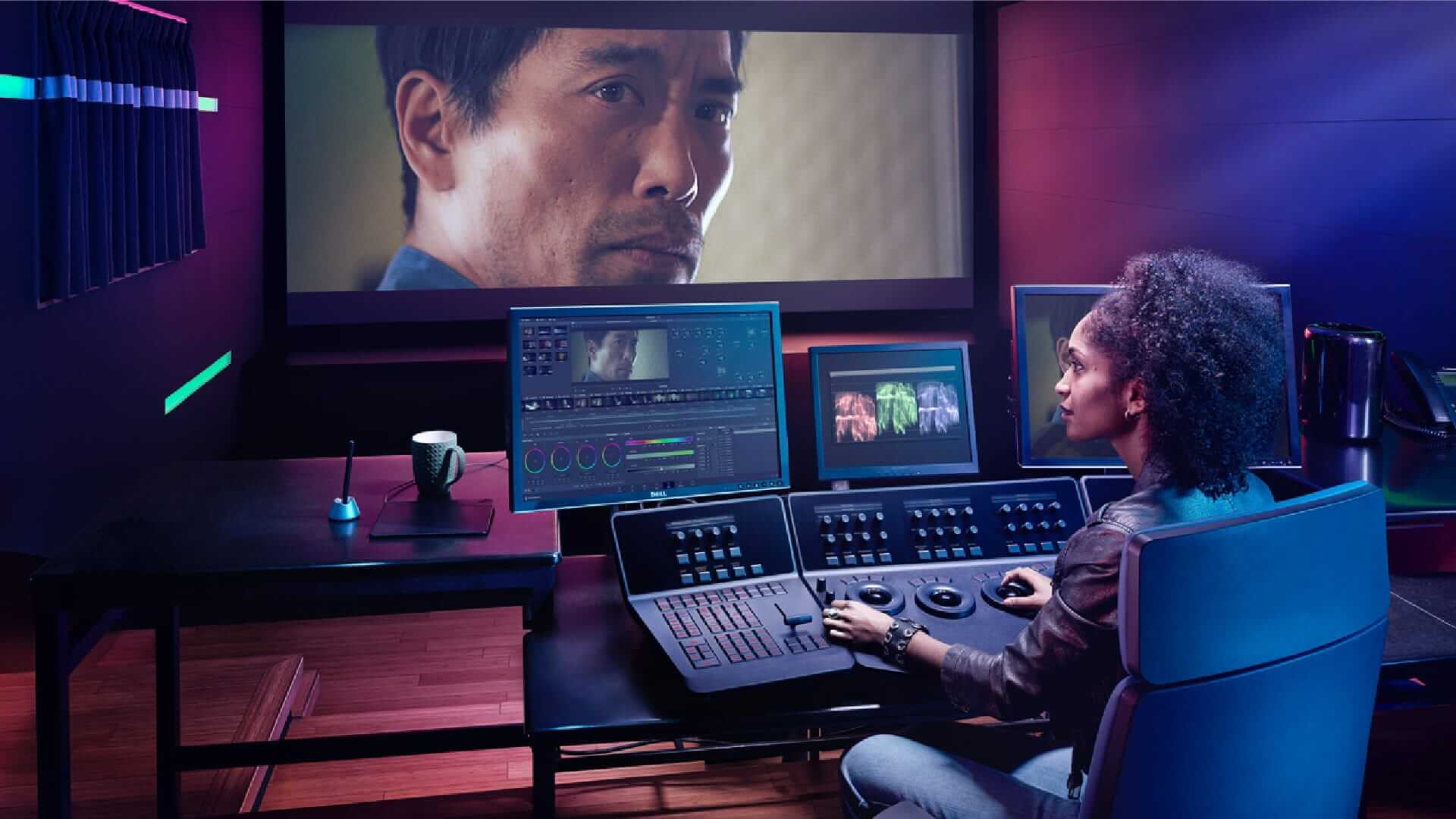

If you want to work from uncompressed DPX, you could grade from ProRes 444 transcodes, and then switch back to DPX for the render. If you use an overkill workflow for your situation, it could cause glitches and down time. In smaller operations, one has to be more flexible, including using workflows that are more appropriate for the situation. In larger operations, the workflows (usually uncompressed) are planned out ahead of time, and very specific tasks are given to the individual operators. Type of project (commercial, feature, etc.)ĭesigning a workflow can be a serious craft of its own. This also brings up the point that workflows actually change depending on a number of factors, including:Ħ. Of course, you have to properly conform it then elsewhere (if you want to conform in DaVinci, just leave everything as usual)
#Davinci resolve studio 15 desqueeze anamorphic 1080p
Even if it's 4K material in a 1080p project, rendering at source-resolution always gets a proper 4K image out of it.Īnyways, when rendering later we just hit the "render at source resolution"-button and everything comes out as it came in, without letterboxes or whatever.

Btw, I never experienced that the gradings didn't stay where the are placed. The great thing is you can simply disable it while rendering and all grades will stay where they are. So all Footage will get that scaling, but isn't actually changed. Then, you go into the preferences and set the input-scaling to that "alexa kowa" preset. "alexa kowa"), and set the sizing back to default afterwards. Proper sizing of course, so 50% vertical in this case. What we like to do is to import one clip, get it into the Color-Page and make a sizing there.

Keys etc can still be pulled from the old LogC clip, no need to make a new key from the graded clip, for example.įor the whole matter, I hate to have DaVinci reformat/reinterpret the footage, that usually brings a huge pain in some points. Of course, grades and colour-matching might be revised somehow. As long as the res+aspect is the same you can simply exchange it. The comper can already begin the shots, and later switch against the graded clips. One solution can be to comp on the graded rather than the "raw" footage. Lossy on some way for sure, if it's visible/noticible at all is another question (as long as you don't go ProRes, you stay uncompressed at least which is not too bad for this) Otherwise, chances are you're just going to have to change everything when it comes time to finishing and delivering the film. I would strongly advise that you talk to your distributor now to see what they will and will not accept for delivery. 2.66 is a very odd aspect ratio for a modern film, and I don't know of many distributors who will willingly show a film in this aspect ratio, either in theaters, in home video, or on television. I would ask the DP for a framing chart so that you know that you're giving them precisely what they saw in the viewfinder. It feels like it an "around the houses" way of doing it. That way I get a 2.66x1 image although I am scaling it down also. Right now i'm making a timeline 1920x714 and selecting stretch frame to all corners in the scaling options. As I understand the Kowa squeeze ratio is 2 and the file resolution is 2880x2160 which is 4x3. Just wondering about the workflow with these files. Stepan Ko wrote:I'm getting some alexa raw shot with Kowa anamorphics. I'm a fan of avoiding introducing letterboxes into a render whenever possible. Definitely verify what your DP framed for. For HD letterboxes, the rules aren't as strict. The typical theatrical scope delivery would be 2048x858 (2.39). You also have to factor in what the DP framed for and what your delivery requirements are. Or if your computer can't handle the higher resolution, just go with a 1920x720 timeline, assuming you actually want to finish as 2.66:1. If need be, you can change your Output Scaling Preset to match your video monitor or final render specs, such as 1920x720. I'd go with "Scale entire image to fit" in case you have some non-anamorphic footage and just resize as necessary. Then, in your project settings, set the timeline Pixel Aspect Ratio to Cinemascope. Right click on the clip attributes for the source files on the media page, and set their Pixel Aspect Ratio to Cinemascope, so that Resolve knows they are scope clips. There are a number of different ways of doing this.Īssuming the majority of your footage is anamorphic, your timeline resolution ideally should match your source (2880x2160), so that you can take advantage of all that extra resolution for color correction and have more options for output.


 0 kommentar(er)
0 kommentar(er)
